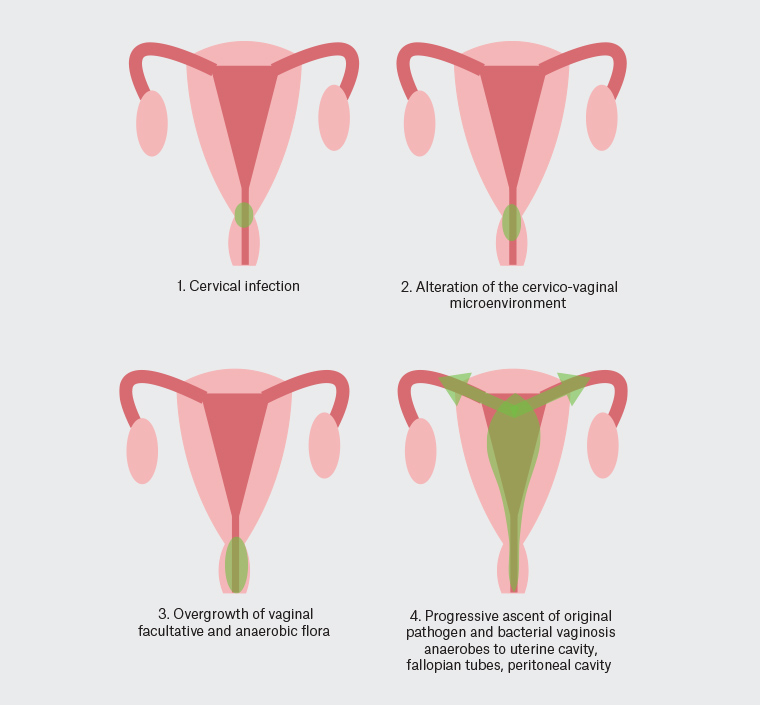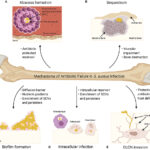Staphylococcus pelvic inflammatory disease (PID) is a rare but severe form of pelvic infection caused by Staphylococcus aureus, including methicillin-resistant strains (MRSA). Unlike the more commonly implicated sexually transmitted pathogens such as Chlamydia trachomatis and Neisseria gonorrhoeae, Staphylococcus species enter the upper genital tract through hematogenous spread, ascending infection post-gynecologic procedures, or contaminated instrumentation.

Etiology and Pathogenesis of Staphylococcal PID
Common Causative Strains
- Staphylococcus aureus – primary cause in post-surgical or postpartum infections
- Methicillin-resistant S. aureus (MRSA) – associated with nosocomial and community-acquired cases
- Coagulase-negative Staphylococci – increasingly recognized in device-associated infections
Risk Factors for Staphylococcus-Associated PID
| Risk Factor | Explanation |
|---|---|
| Recent gynecologic surgery or instrumentation | Allows direct access to upper genital tract |
| Postpartum or postabortion state | Compromised cervical barrier facilitates bacterial invasion |
| Intrauterine devices (IUDs) | Biofilm formation increases susceptibility to staph |
| Immunosuppression | Reduces host ability to combat hematogenous spread |
| Pelvic trauma or perforation | Introduces staph directly into sterile compartments |
| Menstruation | Provides a transient route for bacterial ascension |
Clinical Presentation of Staphylococcal PID
Symptoms
- Lower abdominal or pelvic pain (often bilateral)
- Fever (>38°C) and chills
- Abnormal vaginal discharge (purulent, possibly foul-smelling)
- Dyspareunia (pain during intercourse)
- Dysuria or urinary frequency
- Nausea and vomiting in severe cases
Physical Examination Findings
- Cervical motion tenderness
- Uterine or adnexal tenderness
- Possible adnexal mass on bimanual exam
- Rebound tenderness in pelvic peritonitis
Diagnostic Evaluation of Staphylococcal PID
Laboratory Tests
- Complete blood count (CBC): Elevated WBCs, left shift
- CRP and ESR: Markedly elevated in acute inflammation
- Blood cultures: Often positive in hematogenous cases
- Endometrial or vaginal swabs: To isolate S. aureus and determine resistance
Imaging Studies
- Transvaginal ultrasound: Identifies tubo-ovarian abscess, fluid collections
- CT Pelvis: Assesses abscess size, pelvic fluid, or complications
- MRI: Offers high-resolution view for complex or recurrent cases
Differential Diagnosis
| Condition | Distinguishing Features |
|---|---|
| Tubo-ovarian abscess (TOA) | Mass with central necrosis, often associated with staph |
| Endometritis | Predominantly uterine tenderness, postpartum onset |
| Appendicitis | Right lower quadrant pain, nausea, no vaginal discharge |
| Ectopic pregnancy | Amenorrhea, positive pregnancy test, adnexal mass |
| Ovarian torsion | Sudden onset pain, no systemic symptoms |
Treatment of Staphylococcus Pelvic Inflammatory Disease
Initial Empiric Therapy
Empiric coverage must include MRSA when risk is suspected:
- IV Vancomycin (15–20 mg/kg every 8–12 hours)
- Plus Ceftriaxone (2 g daily) for broad gram-negative and gonorrhea coverage
- Plus Metronidazole (500 mg IV/PO every 12 hours) for anaerobes
Targeted Therapy
Following culture results:
- MSSA: Switch to Nafcillin or Cefazolin
- MRSA: Continue Vancomycin or switch to Linezolid or Daptomycin
Oral Step-Down Therapy
After 48–72 hours of clinical improvement:
- Doxycycline + Clindamycin
- Trimethoprim-sulfamethoxazole for susceptible strains
- Duration: Total of 14–21 days
Surgical and Interventional Management
Indications
- Failure to improve within 48–72 hours of antibiotics
- Ruptured tubo-ovarian abscess
- Suspected pelvic peritonitis
- Retained infected IUD
Procedures
- Laparoscopy or laparotomy for drainage and debridement
- Percutaneous drainage of abscess under imaging guidance
- Hysterectomy with salpingo-oophorectomy in severe, recurrent, or nonresponsive cases
Complications of Untreated or Refractory Staphylococcal PID
| Complication | Description |
|---|---|
| Tubo-ovarian abscess | May rupture, causing sepsis and shock |
| Pelvic peritonitis | Generalized infection of the pelvic cavity |
| Chronic pelvic pain | Due to scarring and adhesions |
| Infertility | Fallopian tube occlusion or damage |
| Ectopic pregnancy | From impaired tubal transport |
| Sepsis and multi-organ failure | Especially with virulent MRSA strains |
Prevention Strategies for Staphylococcus PID
- Aseptic technique during procedures (IUD insertion, D&C, hysteroscopy)
- Postpartum wound care and infection monitoring
- Staph decolonization in patients with recurrent infections (e.g., mupirocin nasal ointment)
- Early treatment of skin infections and localized abscesses
- Prompt removal of infected IUDs or foreign devices
Prognosis and Long-Term Outcomes
Outcomes depend on:
- Speed of diagnosis and initiation of therapy
- Virulence and resistance profile of the organism
- Need for surgical intervention
- Reproductive goals and tubal preservation
- Comorbid conditions (e.g., diabetes, immunosuppression)
With early treatment, the prognosis is favorable. Delayed therapy increases risk for infertility and chronic pelvic morbidity.
Staphylococcus pelvic inflammatory disease represents a rare but potentially life-threatening infection of the upper genital tract. Distinct from classic PID, its management requires a high index of suspicion, especially in postoperative, postpartum, or device-associated infections. Comprehensive diagnostic assessment and early, targeted antimicrobial therapy, often combined with surgical intervention, are critical to reducing long-term sequelae.

